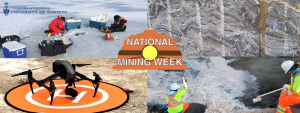May 10 - May 15, 2021 is National Mining Week.
To Celebrate, we're highlighting some of the amazing research our faculty, students and alumni are leading to improve mining practices and make the industry more sustainable.
Prof. Lesley Warren: Mining, Water and Environment
Prof. Lesley Warren’s research examines the largely unexplored bacteria present in mine wastes and impacted waters to generate innovative new technologies that will enhance the environmental practices of the mining industry.
What projects are you currently working on?
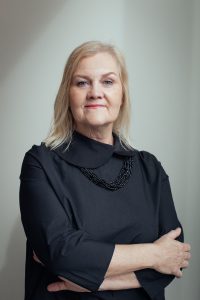
Prof. Lesley Warren, Director of the Lassonde Institute of Mining
The Mining Wastewater Solutions (MWS) Project is developing better tools for reactive sulfur compounds management. Funding for this project come from our mining partners and Genome Canada and Ontario Research Fund – Research Excellence (ORF-RE).
My group is also leading a project to constrain sulfur risks to oxygen levels in Syncrude Canada’s first pilot wet reclamation project, Base Mine Lake (BML). Funding for this project comes from Syncrude Canada and NSERC.
What companies/organizations are you working with?
For the MWS project, we are working with Glencore Sudbury INO, Hudbay Minerals, Rambler Metals and Mining, Ecoreg Solutions and Ecometrix Consulting Companies.
For the BML project, we are working with Syncrude Canada and COSIA.
Who is leading this research and how many are involved (breakdown of profs, students)?
I am the Principal Investigator on both projects (both international).
For the MWS project there are three professors from three institutions, three research scientists, one field researcher, 10 students, four post-doctoral fellows and two research assistants involved.
For the BML project there are three professors from three institutions, one field researcher, 12 students and three post-doctoral fellow involved with the project.
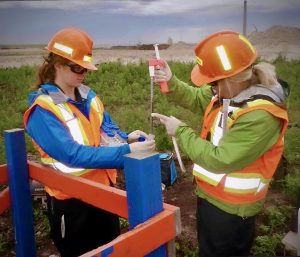
What impact do these projects have on the larger scale? (In what way will engineering address the problems to make the world a better place?)
Mining requires huge amounts of water to extract valuable commodities and generates massive amounts of wastewater that must be cleaned according to strict environmental standards before being discharged. This wastewater also provides an ideal habitat for microbes, and studying these can help reduce wastewater treatment costs and the environmental footprint of the mining industry.
My research focuses on identifying the microbes that occur in these contexts and how they drive changes in water quality or waste stability. These new discoveries are leading to new models and tools that tackle the underlying root causes of potential risks to the environment.
To read more about Prof. Lesley Warren's work, visit https://warrenlab.civmin.utoronto.ca/
Meet alumna Nicole Doucette
Nicole Doucette (MinE 1T4 + PEY) combined her passion for writing and her mineral engineering background to make a rewarding career in science communications.
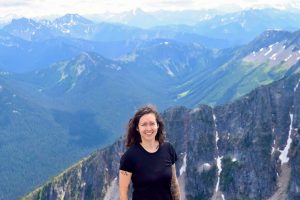
Tell us about yourself?
Where are you working and what is your role?
Can you tell us about your career path and what led you to where you are now?
What projects are you currently working on?
What impact do these projects have on the larger scale?
Editor's note: Nicole has produced two podcast series: Discovery to Recovery and Dynomine (available on Spotify, Apple podcasts, etc.).
Prof. Kamran Esmaeili: Behind the Scenes with Bryan Podcast
Prof. Kamran Esmaeili was featured on the Behind the Scenes with
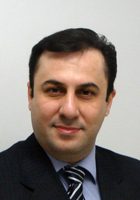
Bryan Podcast, hosted by Bryan Ulrich. In the episode, Esmaeili discussed his recent paper, Haul Road Monitoring in Open Pit Mines Using Unmanned Aerial Vehicles: a Case Study at Bald Mountain Mine Site co-authored with Thomas Bamford (CivE PhD Candidate), Filip Medinac (MinE 1T2, MASc 1T9) Matthew Hart (MinE 1T7) and Michal Kowalczyk (CivE 1T0, MEng 1T5).
Five years ago Esmaeili had the idea to conduct UAV research based off his experience consulting on projects. He saw the need for more effective data collection and process monitoring.
"Decision making had been based on partial information and sometimes missing facts, so that has a significant impact on mineral resource management," explains Esmaeili.
There was a need to collect data with higher temporal and spatial resolution to make timely and efficient decisions. At the time, UAV technology had advanced significantly, but there wasn't much of an application in the mining industry. Esmaeili wanted to examine how UAV technology combined with machine learning could be used to improve the process of data collection and decision making.
An experiment was conducted at Kinross Gold Corporation’s Bald Mountain mine, an open pit mine complex located in Nevada, USA.
To learn more, listen to the podcast here:
The Behind the Scenes with Bryan podcast is an engineering podcast that often pertains to the world of mining, and especially mining waste management.
